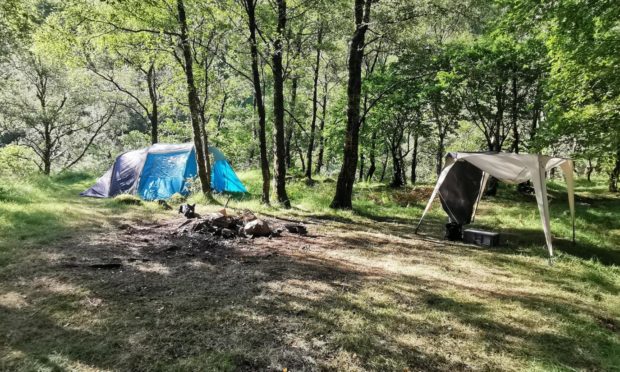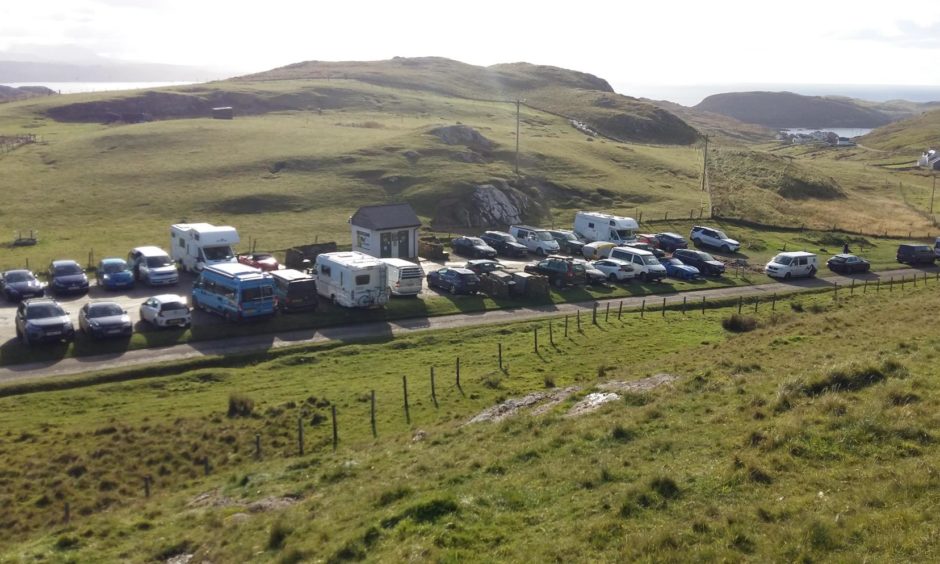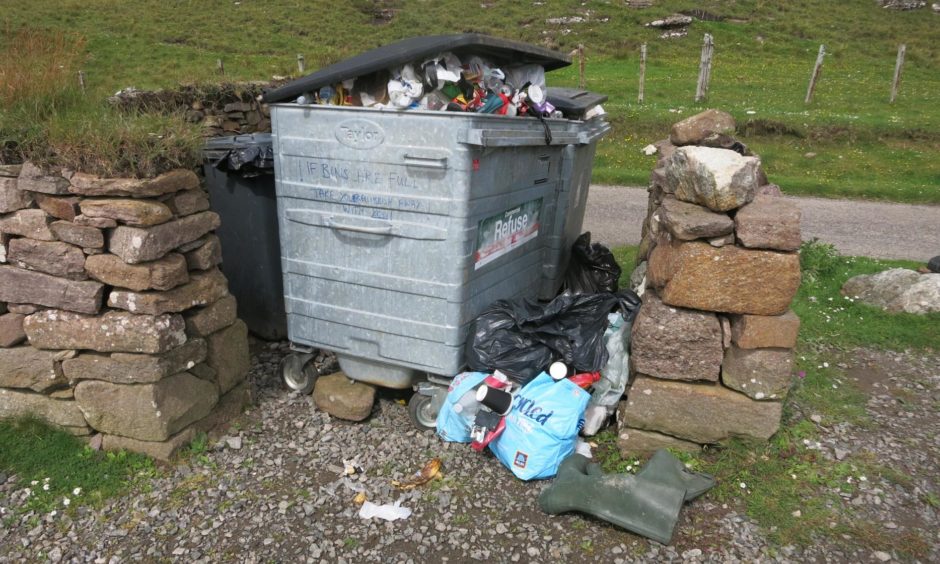Rural communities are increasingly seeing tourism as a double-edged sword, with rising visitor numbers bringing opportunities but also major pressures, according to a new report.
Lack of infrastructure to cope with growing numbers of people and areas being blighted by irresponsible and anti-social behaviour are highlighted in the report by the John Muir Trust.
‘Frontline Realities: Rural Communities and Visitor Pressures’ says some communities feel “under siege” with 97% of people interviewed reporting concerns over issues including litter, human waste, road congestion and ‘wild’ camping.
Also, 90% believe not enough public funding is being spent on essential infrastructure.
The trust manages a number of tourist hotspots, including the summit of Ben Nevis, gateways into the Cuillin mountains in Skye and Sandwood Bay in Sutherland.
It said visitor numbers have risen steadily in recent years, but the trend came to a head in 2020 with the easing of the first Covid lockdown.
It spoke to 37 community representatives in tourist destinations in Highland Perthshire, Lochaber, Skye, Lewis, Harris, Assynt Isles and North West Sutherland.
More than half (51%) said present visitor numbers are not sustainable with the current rural infrastructure, with just 13% saying it is.
Several raised the potential of a tourism tax for short-term visitors to pay for local infrastructure.
A number of interviewees also referred to a “democratic deficit” with rural communities often feeling inadequately consulted on tourism developments.
Cecilie Dohm, the trust’s policy officer and the report’s lead author, said: “Locals understand the need to maintain and nurture tourism, which is the economic lifeblood of many communities in our most fragile and sparsely populated areas.
“At the same time, they feel strongly that existing levels of investment in rural infrastructure and resources are inadequate and unable to deal with the rising numbers and pressures.”
She said restrictions on international travel will likely mean a huge wave of visitors from across the UK into popular destinations this summer.
“As such, we believe that we need to empower local communities and ensure they have a valid voice in the key decision-making processes that affect them.”
She welcomed a decision to double the Rural Tourism Infrastructure Fund which helps infrastructure projects.
However, local authority cuts have had an impact with public toilets, bin collections and countryside ranger services reduced in some areas.
The report’s recommendations include strategic targeting for rural infrastructure as part of a green recovery from Covid-19 and a national advertisement campaign to promote the Scottish Outdoor Access Code.
It also wants VisitScotland to promote ‘slow’ tourism and help spread visitor numbers and reduce focus on hot-spots.
The research, carried out from October to December 2020, showed 97% of interviewees had experienced increasing visitor pressures, and 82% had noticed a change in the type of visitors, with more behaving irresponsibly.
‘Increased waste and littering’ was mentioned in 33 out of 37 interviews, ‘inappropriate wild camping’ in 31 interviews and ‘human waste’ in 29.
Chris Taylor, VisitScotland regional leadership director, said: “VisitScotland, along with many destination organisations, is engaging in conversation with communities to ensure that tourism supply and demand are matched and communities are comfortable welcoming visitors when it is safe to do so.
“At the same time, we are working with partners to help make the infrastructure that our visitors rely on more resilient.”
He said marketing will continue to focus on regional and seasonal spread, encouraging visitors to take time to enjoy Scotland while highlight the need to be responsible and respectful of communities and the environment.
Increasing problems with inappropriate parking and camping
An area highlighted in the John Muir Trust report as affected by rising visitor numbers is Assynt and North West Sutherland.
The area, on the popular North Coast 500 route, is said to be struggling due to a lack of infrastructure such as car parks, waste disposal sites, camp sites and public toilets.
It said this had led to communities experiencing increasing problems with inappropriate parking and camping. These escalated in 2020 as many campsites remained closed and others reduced their capacity due to the Covid risk.
The trust witnessed increasing visitor pressures at its properties at Quinag and Sandwood Bay in Sutherland, with 1,791 cars at Blairmore car park in August 2020 compared to 842 in August 2019.
During the busiest days of 2020, there were more than 90 cars at Blairmore car park, which officially has 40 spaces, leading to congestion on local roads and campervans parked on protected machair.
People interviewed for the report said that a growing number of visitors are not abiding by the Scottish Outdoor Access Code and the principle of ‘leave no trace’.
Problems with littering, human waste and chemical waste from campervans are increasing and impacts from fires and tree cutting are affecting communities and sensitive habitats.
Several interviewees reported rising anti-social visitor behaviour and that communities feel increasingly overwhelmed by visitor pressures.
Some called for local byelaws to address the growing friction between local residents and visitors.
While recognising tourism is essential to the local economy, people urged promotion of slow tourism and rebranding the region as a place of recuperation, health, and wellbeing.


